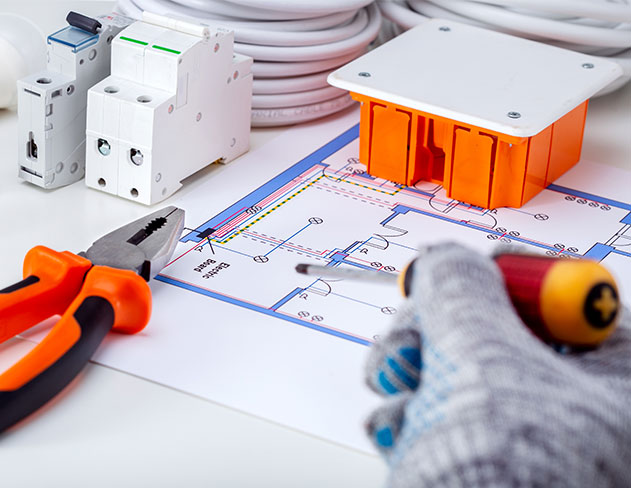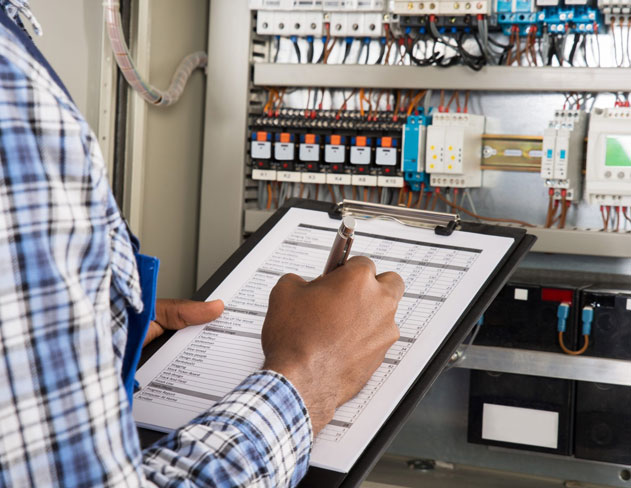EIC And EICR – What Are The Differences
Grasping the differences between an Electrical Installation Certificate (EIC) and an Electrical Installation Condition Report (EICR) is a key step towards ensuring electrical safety in any property.
An EIC is a document that a competent individual, such as a certified electrician, issues after completing electrical installation work. This certificate is essentially a seal of approval, confirming that the electrical work aligns with the British Standard for electrical safety (BS 7671). It serves as a testament to the inspection and testing carried out at the time of the installation, verifying that it meets the required safety standards.
On the flip side, an EICR is a comprehensive document that evaluates the safety and condition of a property’s existing electrical installations. Unlike the EIC, which is a conclusion to new work, the EICR is a health check for existing electrical installations.
Understanding the nuances between an EIC and an EICR is crucial. While both are instrumental in maintaining electrical safety, they serve different functions. The EIC is a validation of new installations, while the EICR is a thorough assessment of the current state of electrical installations.
What Are the Main Differences between EIC and EICR?
While both the EIC and EICR are integral to ensuring electrical safety, they serve different purposes and are used in different contexts. Here are the main differences between an EIC and EICR:
Purpose
- EIC: Issued when new electrical work is completed, or existing work is altered. It certifies that the work complies with the national safety standard and provides a benchmark of the installation’s condition at the time of the work.
- EICR: A report that assesses the condition of an existing electrical installation. It’s typically used to ensure ongoing safety in properties, particularly rented properties, where electrical installations can deteriorate over time.
When They Are Issued
- EIC: Issued upon completion of new electrical work or alterations to existing work.
- EICR: Conducted at regular intervals to assess the condition of existing electrical installations.
What They Cover
- EIC: Covers the specific electrical work that has been completed or altered.
- EICR: Covers all existing electrical installations in a property.
| EIC | EICR | |
| Purpose | Certifies new or altered work | Assesses condition of existing installations |
| When Issued | Upon completion of work | At regular intervals |
| What It Covers | Specific completed or altered work | All existing installations |
The Importance of Electrical Safety
Electrical safety is of paramount importance in any property, whether residential or commercial. Faulty electrical installations can lead to severe consequences, including electrical fires or electrocution. Regular inspections and testing, evidenced by an EIC or EICR, are crucial in mitigating these risks. These certificates ensure that electrical installations comply with safety standards and identify potential issues before they become significant problems. By understanding the differences between an EIC and an EICR, property owners can better maintain the electrical safety of their properties.
Who Can Issue an EIC or EICR?
The responsibility of issuing an EIC or EICR lies with competent professionals who have the necessary qualifications and experience. However, the qualifications and experience required can vary depending on whether an EIC or EICR is issued. See more about who can carry out an EICR, on our dedicated page.
Qualified Electrician
A qualified electrician can issue both an EIC and an EICR. They must have:
- Adequate insurance to cover any potential liabilities.
- Qualifications in the current version of the wiring regulations (BS 7671).
- Experience in carrying out periodic inspection and testing, typically at least two years.
While the qualifications are similar for issuing both an EIC and EICR, the context differs. For an EIC, the electrician certifies new or altered work, while for an EICR, they assess the condition of existing installations.
Which Property Types Require an EIC or EICR?
Different types of properties have different requirements for EIC and EICR. Let’s look at these requirements:
Domestic Properties
An EIC is typically required for domestic properties when new electrical work is completed or when existing work is altered. On the other hand, a domestic EICR is required at regular intervals to assess the condition of existing installations. Landlords have a duty to ensure the safety of their tenants and must adhere to regulations regarding the frequency of testing and the documentation that needs to be provided.
Commercial Properties
Commercial properties also require both EIC and EICR, but the context differs. An EIC is required when new electrical installations are put in place or existing ones are altered as part of the property’s commercial activities. A commercial EICR test, on the other hand, is needed at regular intervals to ensure the ongoing safety of the electrical installations, given the higher usage and wear and tear in commercial properties.
Social Housing Units
Social housing units have different requirements. While they are covered by various regulations that mandate electrical safety standards, there is currently no requirement for these properties to have an EICR every 5 years. However, any new electrical work or alterations to existing work in social housing units would still require an EIC.
The Process of Obtaining an EIC or EICR
The process of obtaining an EIC or EICR involves several steps, but the specifics can vary depending on whether an EIC or EICR is being issued.
For an EIC, a competent person, such as a qualified electrician, must be hired to carry out the new electrical work or alterations. Once the work is complete, the electrician will conduct a series of tests to ensure that the work meets safety standards and then issue the EIC.
For an EICR, a competent person is hired to thoroughly examine the existing electrical installations in the property. This involves a series of tests to assess the condition of the installations and identify any potential safety issues. Once the inspection and testing are complete, the competent person will issue the EICR.
Understanding Your EIC or EICR
Understanding the information provided in your EIC or EICR is crucial for maintaining the electrical safety of your property. While both documents provide valuable information about your electrical installations, the specifics can vary depending on whether you have an EIC or EICR.
Understanding Your EIC
An EIC provides a record of the results of the inspection and testing performed at the time of the installation. It includes details about the nature of the work carried out, the results of the inspection and testing, and any deviations from the BS 7671 safety standard. It also includes a declaration that the work has been designed, constructed, inspected, and tested in accordance with the standard.
Understanding Your EICR
An EICR, on the other hand, provides a detailed assessment of the condition of your existing electrical installations. It includes information about the extent of the inspection and testing, the results of the inspection and testing, and any deviations from the BS 7671 safety standard. It also includes a list of recommendations for any remedial action required to bring the installations up to standard.
Example Use Cases
Use Case 1: Landlord Renting to New Tenants
John is a landlord about to rent his property to new tenants. To ensure his tenants’ safety and comply with legal requirements, he needs to have an Electrical Installation Condition Report (EICR) conducted.
The EICR will assess the safety of the existing electrical installations in the property and identify any potential issues that need to be addressed. Once the EICR is complete, John can provide a copy to his new tenants to confirm that the property’s electrical installations have been checked and are safe. See our related page for more information on the EICR rules for landlords.
Use Case 2: Home Has Just Had Rewiring Done
Sarah has just had her home rewired. Upon completion of the rewiring, the electrician will issue an Electrical Installation Certificate (EIC). The EIC confirms that the new wiring has been inspected and tested, and complies with the BS 7671 safety standard. Sarah can keep the EIC as a record of the work done and may need to provide it if she decides to sell her home in the future.
FAQ’s
Do I need an EIC for minor electrical work?
A: Not all electrical work requires an EIC. Minor electrical work, such as adding a socket to an existing circuit, may not require an EIC. However, it’s always best to consult with a qualified electrician.
Can I carry out the inspection and testing for an EIC or EICR myself?
A: No, the inspection and testing for an EIC or EICR should be carried out by a competent person, such as a qualified electrician or a qualified person.

